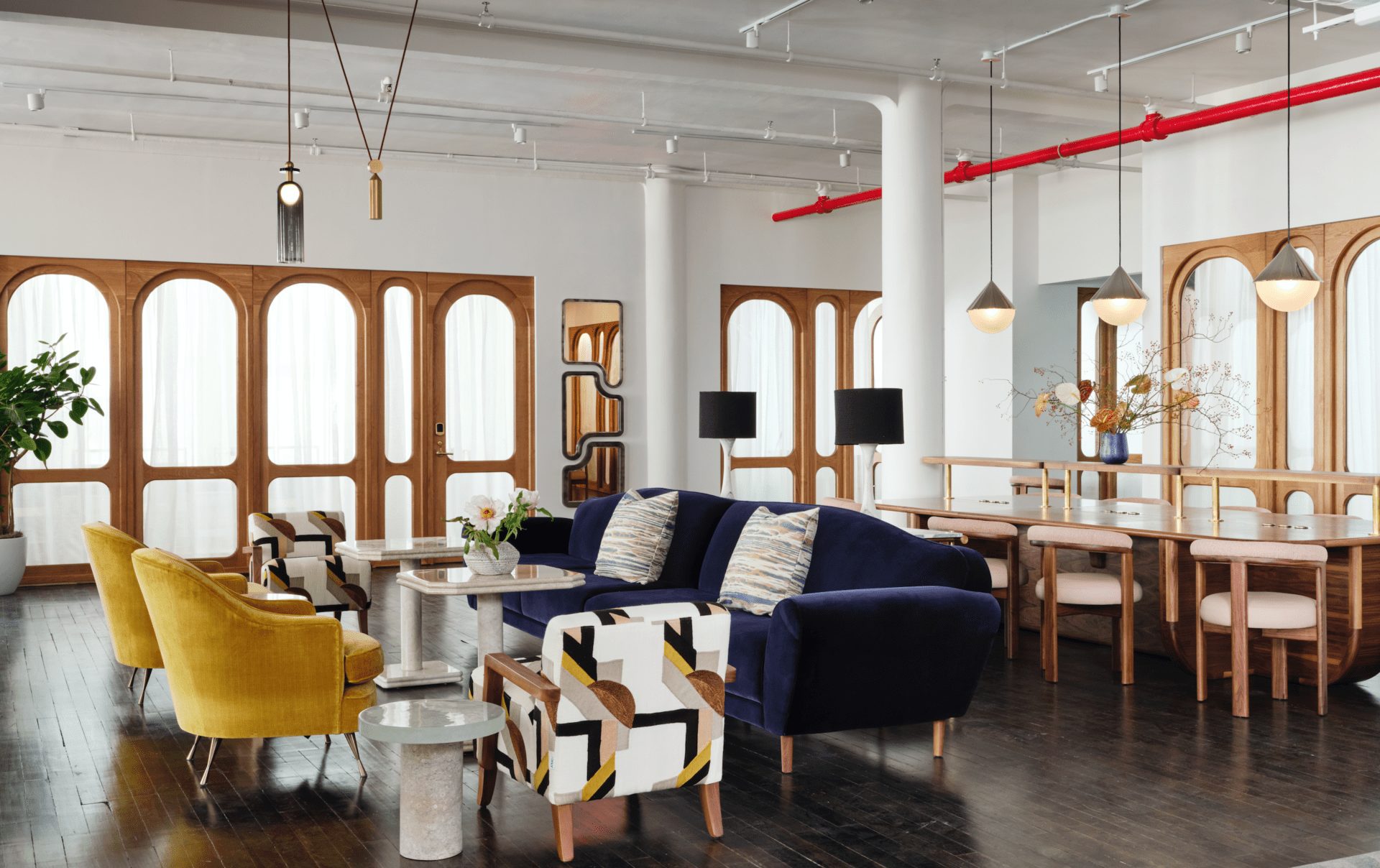 The library by Blacksheep at Qbic|Curiosities at Qbic|Curiosities at Qbic|Playground, Liverpool Hilton’s glam late-night venue|Lanes of London|The restaurant at Lanes of London|Tim Mutton, founder of Black Sheep||
The library by Blacksheep at Qbic|Curiosities at Qbic|Curiosities at Qbic|Playground, Liverpool Hilton’s glam late-night venue|Lanes of London|The restaurant at Lanes of London|Tim Mutton, founder of Black Sheep||
Tim Mutton, the founder of hospitality designers Blacksheep, talks to onoffice about the changing hotel industry, and how to create bars and restaurants that satisfy locals and guests
What would you say your role is, when it comes to a hotel design project?
Lots of people think my job is about choosing tables and chairs, but it’s about how to create a vibe, how to make it relevant, and how to think about the long-term offer.
What state is the hotel industry in at the moment, and how is it changing?
The whole hotel industry has suffered and had a massive wake-up call, primarily because of how it treats food. Back in the day, hotels were the places to eat; they were really special, and nowadays if you have to eat in the hotel you feel it’s expensive and second-class to what’s outside. I think most people now, when they travel, would prefer to go out and explore the city and eat in local restaurants.
So how can hotels tackle that?
Hotels always feel they need to cater for everybody, with cuisine from around the world, so a lot of the time they have a monstrous menu, but deliver something mediocre because they’re trying to do too much. Now, hotels are starting to understand that, they’re not flying stuff in from all over the world, they’re becoming more sustainable and local. In brilliant hotels, their focus is on locality. If you go to an island resort, why would you have a steak restaurant? Do something fish-oriented –where it can be out of the sea and on the plate in just a few hours – rather than flying in some steaks.
What should be considered when creating a ‘local’ restaurant?
Sometimes locals don’t want to sit with the tourists. Imagine if you put a Hilton in Shoreditch and tried to get locals into that restaurant. It’s not going to happen. So how do you deal with that? Locals don’t react well to brands. Do you call it something else and act like it’s completely separate? Or do you collaborate with a local operator? That’s a better idea.
Like a pop-up?
I think we’ve overused the word pop-up. I can’t stand it now. When people say to me they’re interested in talking about a pop-up, I say pop off. If you’re looking at a pop-up now, you’ve missed the boat. Especially when big brands want to do it. Yawn.
I had a client ask for a food truck, but they were just latching on to a trend. I said, do something relevant to you. That whole idea came out of west coast America where people were creating start-ups because they didn’t want to commit to leases. That’s why food markets in this country are thriving because, quite frankly, landlords on our high streets are greedy, and they’re not giving the opportunity to smaller companies. So these start-ups are saying, screw that, I’ll make it in my home kitchen, then I’ll take to a stall.
That’s just how things have opened up. It’s not a trend, it’s come from something. Likewise, there’s so many things hotels can do to think outside the box and be a bit more adventurous in their own way.
What hotel projects are Blacksheep working on at the moment?
We’re working with Four Seasons in Johannesburg, plus Qbic, The Ritz Carlton, and Mandarin Oriental; we’re also doing a project with Fairmont in Amman and have just picked up a nice project for Shangri-La in Sri Lanka. So we’re working at both the high and low end, and everything in between, which gives us a broad understanding of guests and their relevant needs. At the top end, fine dining is not what it was. Just like with business, food has become a lot more casual. Casual dining is on the up – just look at the high street.
What project has been the most challenging?
Every day there is a specific challenge relative to what we do. It’s ever-evolving; we don’t offer one-size-fits-all design solutions. We’re specialists and we start from the beginning with our clients, researching the market, asking those difficult questions and developing their brands based on our findings and their growth strategy.
Last year we started working with a client who had an amazing project that could have been a dream come true, both in terms of its location and the history of the building. Unfortunately, expectations were misaligned right from the start and eventually we had to turn the project away. The comical moment was when we took the client around a stunning hotel to show them the exquisite use of Italian furniture at its best and their comment was: “It looks like Ikea.”































